Gooey, chewy, and slightly crispy – this vegan Chinese nougat is a perfect addition to your holiday table.
Last updated: March 20, 2025
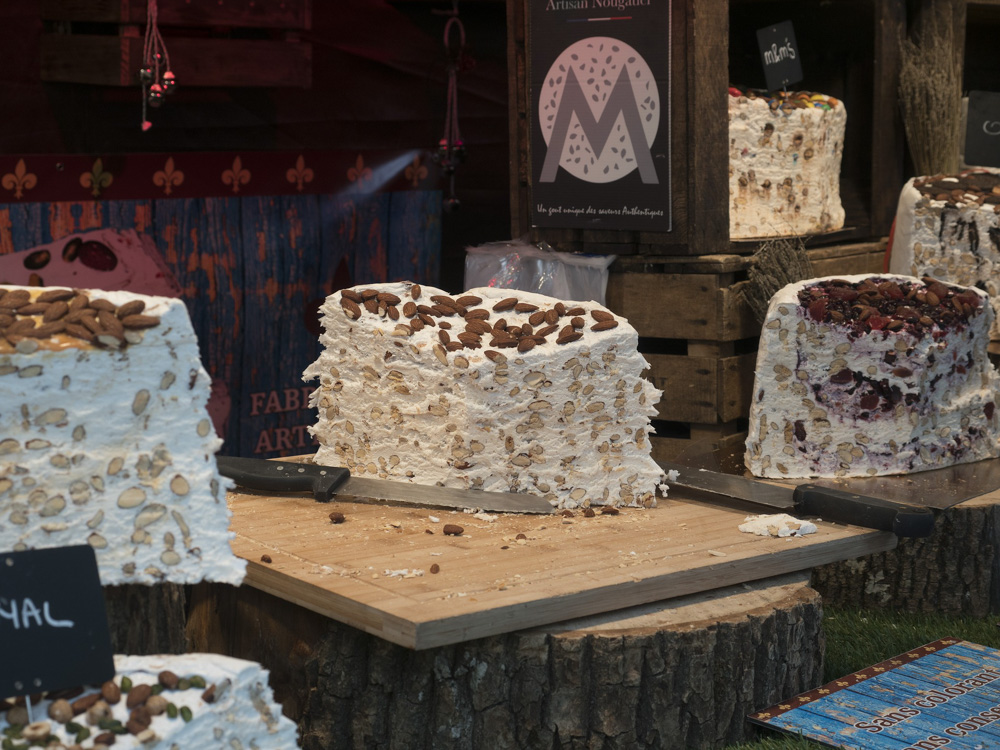
Vegan Chinese Nougat: An Easy and Fun Recipe to Try this Holiday Season
Chestnuts?… Are you sure you’re making a confection?
I loved snacking on roasted chestnuts while strolling the streets of Europe. Around the Thanksgiving season, when our local grocery store stocks up on these hard-shelled nuts, I attempt to revive my European memories in my own kitchen.
But using chestnuts for traditional vegan Chinese nougat was something new to me. A mix of sweet and savory flavors in this recipe grabbed my attention and inspired me to dive deeper into the history of the treat. The more I learned, the more determined I was to make my version of vegan Chinese nougat.
Chestnuts are naturally sweet. Unlike other nuts, they become soft after being roasted and thus work perfectly for any sweet dish.
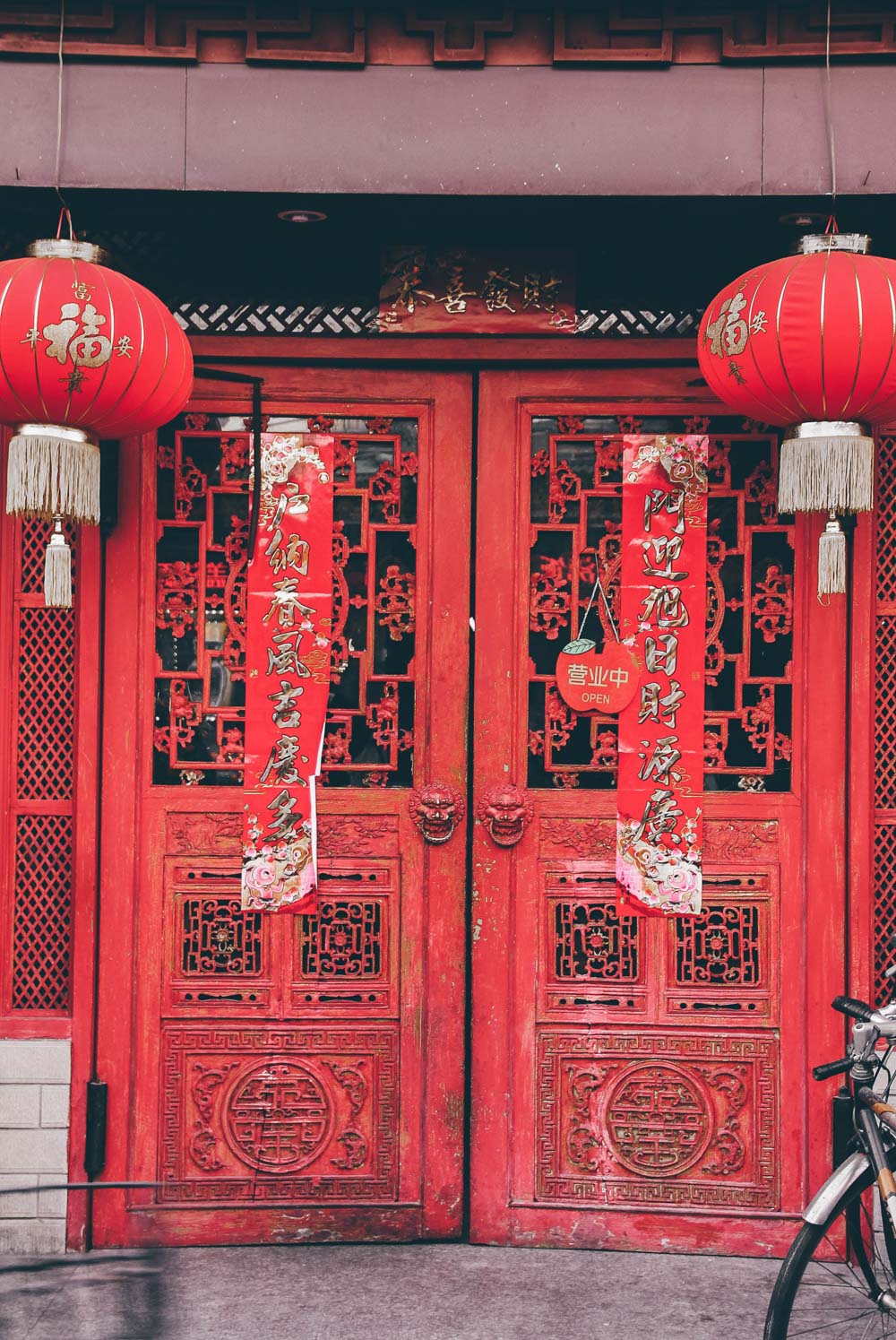

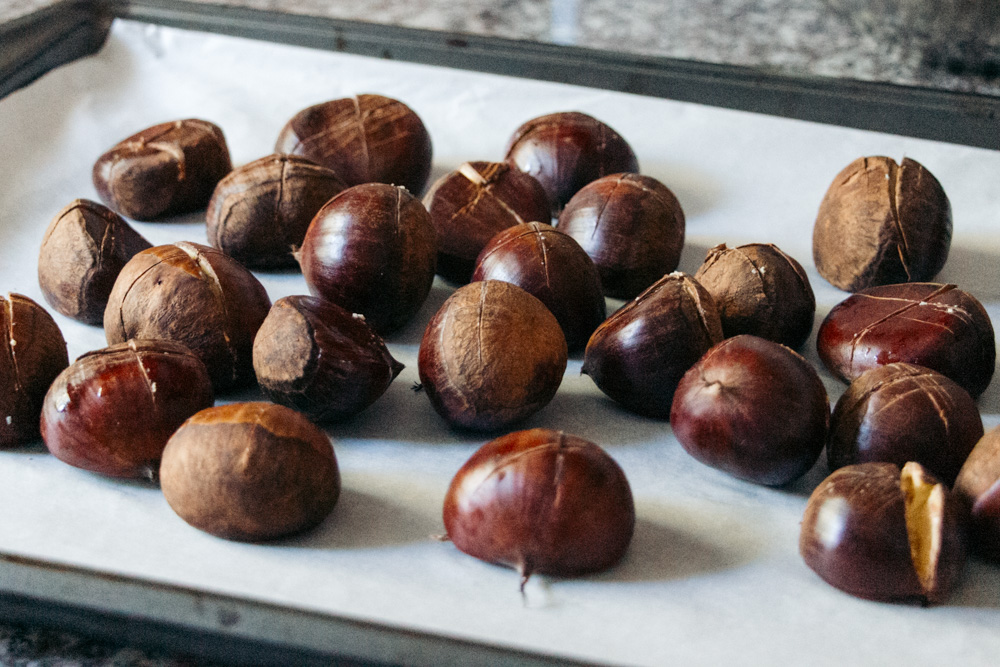
Is Nougat a Chinese Dessert?
The origins of nougat are obscure. Many countries, such as Italy, France, and Spain, claim the parenting of this gooey sweet. Iran also joins their ranks, bringing to the table its own traditional confection that closely reminds of nougat.
It’s believed Muslim traders traveling through Southern Europe and Central Asia spread such sweets as halva and baklava to other nations. Modified, these confections sneaked into China at one point.
The original recipe has evolved. Each nation has added its traditional flavor to the confection. Consequently, the set of ingredients used for – for the sake of this post, let’s call it Chinese nougat – has changed.
While the Chinese don’t insist that they are the founders of nougat as we know it today, they still admit that the confection has been a staple of their cuisine for centuries. Interestingly, only royalty enjoyed the chewy and crispy sweets at first. Lower classes couldn’t neither afford nor think of enjoying such a privilege as eating royal Chinese nougat (no vegan versions back then).
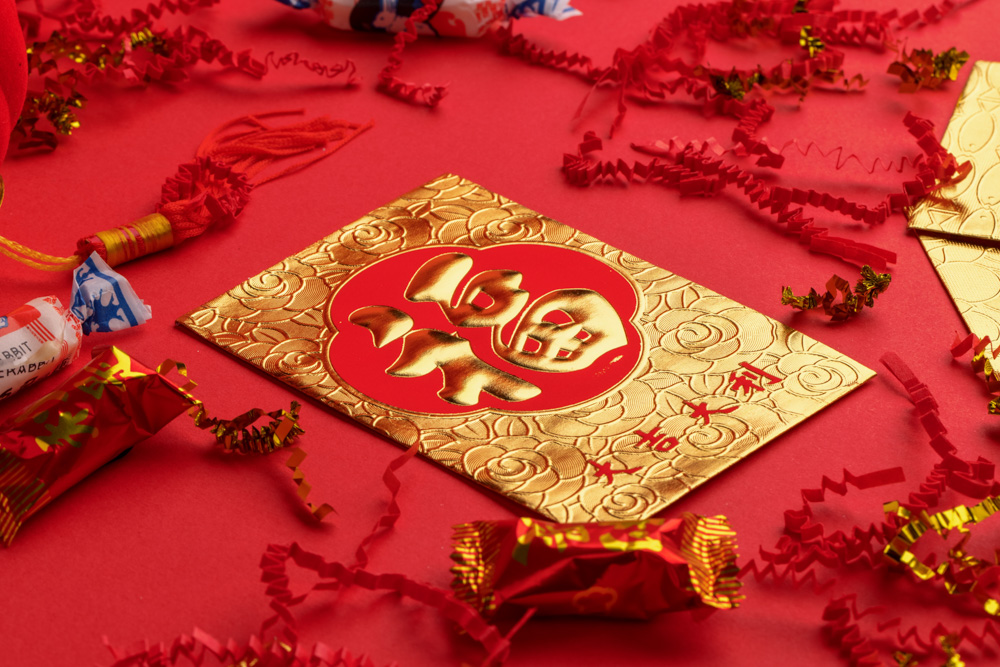
Many Varieties of Chinese Vegan and Non-vegan Nougat
With time, the royal treat slipped into the masses. It ceased to appease only the taste buds of the rich and was adjusted to the palates of the poor as well. With the increased number of households trying their hands at traditional Chinese nougat, whether it was vegan or not, new textures and flavors were born.
You can still recognize a few distinctive versions of this confection. But their flavors differ greatly depending on where they are made. The most popular types of nougat include the following:
- White Nougat. These sweets are made with egg whites (like some of the traditional Chinese nougat), sugar, honey, nuts, and dried fruits. They are normally lighter, softer, and chewier compared to the other varieties.
- Brown Nougat. You would think that adding caramelized sugar, like this nougat asks for, sounds more like a Chinese recipe. And you might be right. For our vegan Chinese nougat, though, we omit this ingredient and stick to the lighter kind of the convection. For those who insist on using the caramelized sugar, keep in mind that brown nougat is harder in texture and darker in color.
- Chocolate Covered Nougat. This nougat can be vegan or non-vegan, brown or white, but it’s less popular with the Chinese population. The rest of the world, especially Europe and North America, often use this gooey confection as a candy filling.
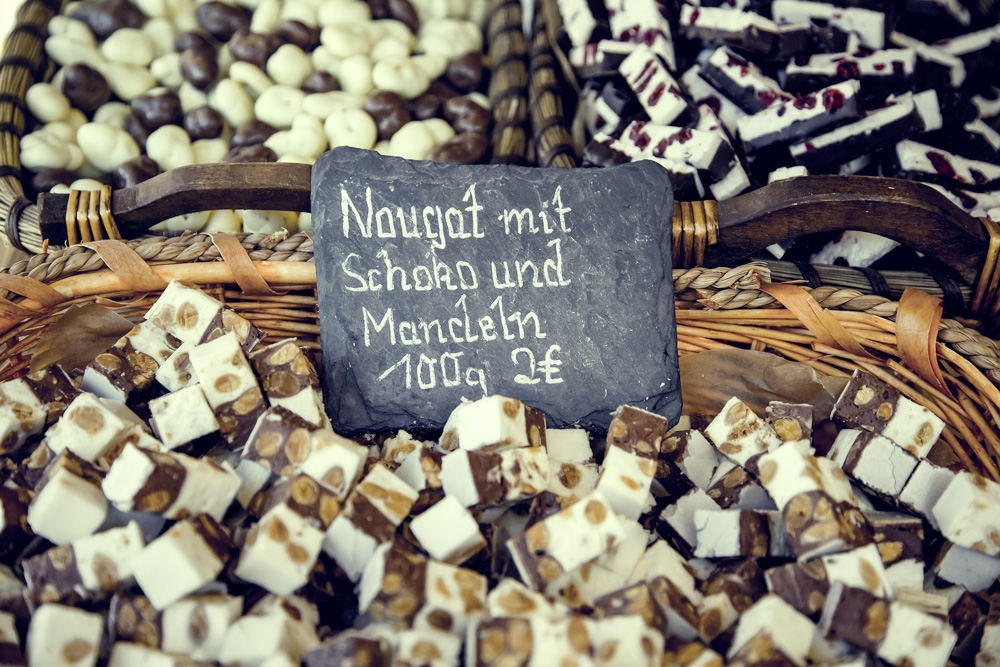
Do Chinese Make Their Nougat Differently?
Normally, Chinese nougat is not vegan. The recipe includes milk powder. Considering this, the Chinese often refer to their nougat as simply as milk candy. Other ingredients to add to the recipe may include eggs, cookies or crackers, nuts, and dried fruits. Melted marshmallows usually serve as the main component that glues everything together.
Once nougat hardens, the Chinese cut it into bite-sized pieces and cover with non-stick paper. Sometimes, you can find the confection wrapped in edible rice paper.
All types, vegan and non-vegan, of Chinese nougat are the most popular around holidays. Hardly any Asian family celebrates Chinese New Year without indulging in the gooey sweets after devouring a load of other traditional dishes.
In the Western world, the so-called Chinese nougat can be served during the Christmas and Easter seasons. If you use chestnuts, like we did in this vegan Chinese nougat recipe, be sure to add this dish to your Thanksgiving menu.
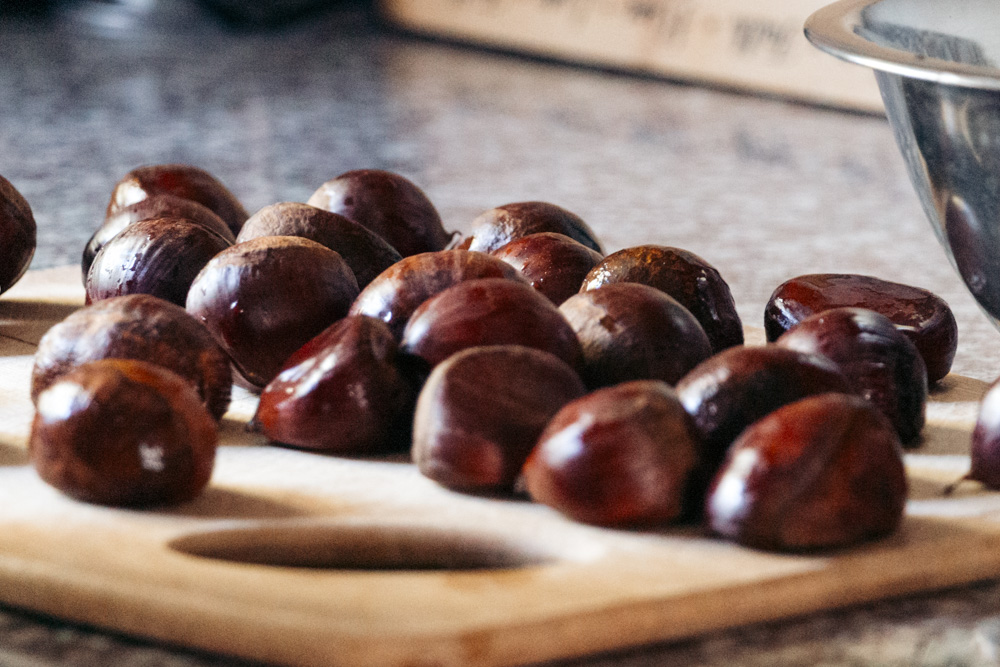
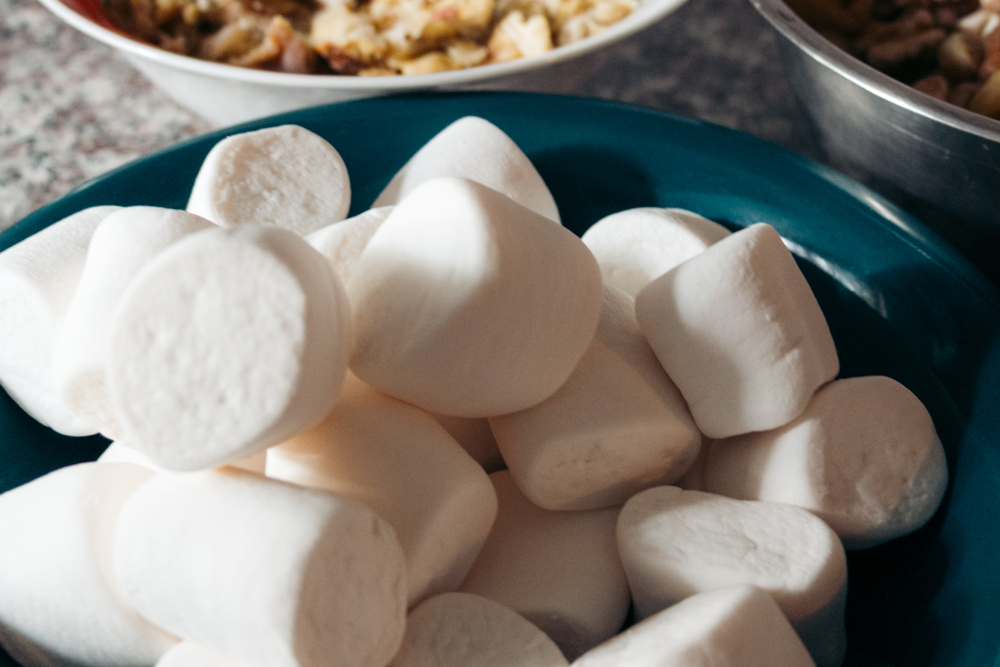
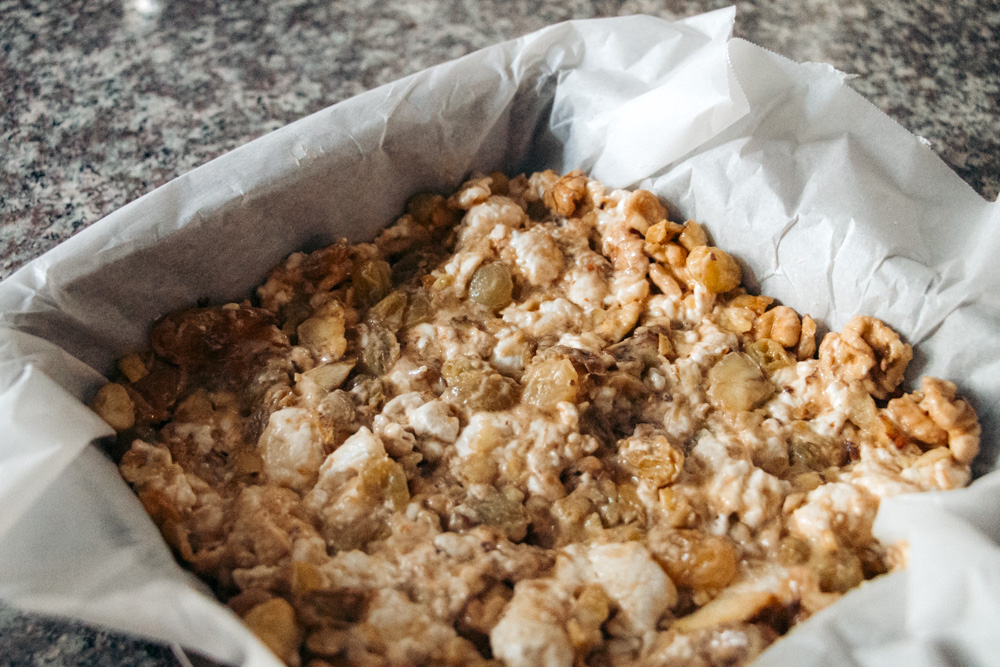
VEGAN CHINESE NOUGAT RECIPE
If you long for a crunchy texture, stick to the more traditional vegan Chinese nougat recipe and add cookies. It’s optional, though. For those who go for everything chewy and light, leave the cookies out.
In this recipe, we also use walnuts, raisins, and chestnuts. For your own creations of plant-based Chinese nougat, select nuts and dried fruits that suit your palates.
Last but not least, use vegan marshmallows, the ones that have no animal-derived gelatin. For non-vegan Chinese nougat, any marshmallows at your local grocery store work just fine.
Ingredients
- 2 tbsp coconut oil
- 1 bag (280 g) vegan marshmallow
- 1/3 cup (50 g) chestnuts, chopped or crushed
- 1/3 cup (50 g) walnuts, chopped or crushed
- 1/4 cup (40 g) raisins
- 1/3 cup (50g) cookies. You can use crackers, chocolate chips, or any cookies of your choice.
Directions
- In a non-stick pan, heat the coconut oil over medium heat.
- Add the marshmallows and switch to medium-low heat. Use a spatula to mix the marshmallows with the oil. Stir until the mixture is smooth.
- Turn off the heat. Add the nuts, raisins, and cookies. Stir until it’s mixed evenly.
- Place parchment paper in a mold or any low container. Put the mixture in it and press to form.
- Refrigerate for 2 hours or overnight.
- Remove from the mold. Cut into small pieces. Enjoy
Notes
- Don’t overcook the marshmallows, otherwise the nougat will be too hard.
- Store in an airtight container in the refrigerator. These vegan treats are good for 3 days.
- If you don’t want your candies to stick to each other, wrap them or separate them with the parchment paper.
Want to experiment with more travel inspired dishes? Check out these recipes.
Read Next
- AMERICAN TRADITIONS: Vegan S’mores: America’s Favorite Campfire Snack
- MEDITERRANEAN FOOD TRADITIONS: Travel Inspired Recipes: Mediterranean Hummus
- FRENCH TRADITIONS: Travel Inspired Recipes: Vegan French Onion Soup
- RUSSIAN PIE: Travel Inspired Recipes: Vegan Russian Cabbage Pie